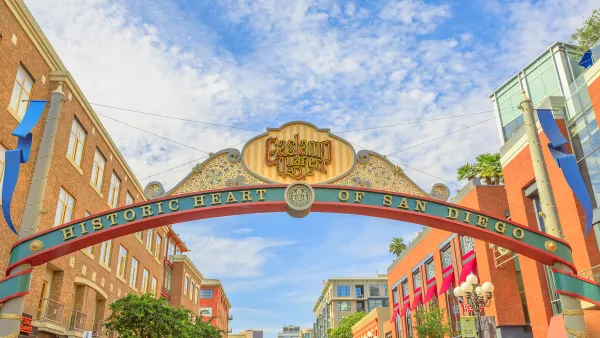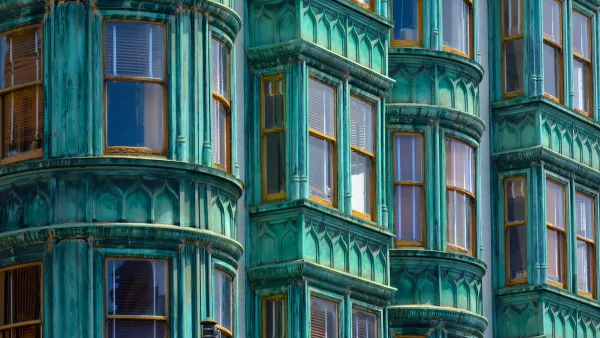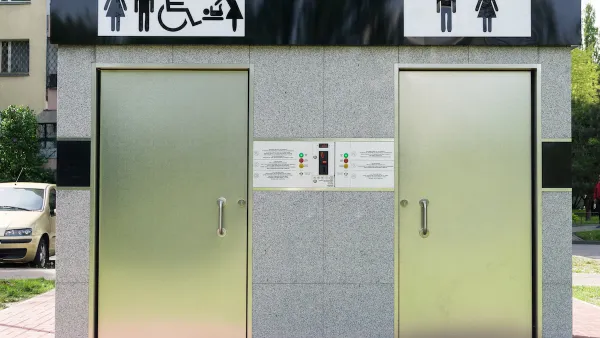Historic buildings add character to neighborhoods. When torn down, pieces of history are also stripped from the city; when restored, they can act as catalysts for revitalization.
There’s a distinct difference between the design of the high-rise office building that sits at 1100 New York Avenue NW in Washington, D.C. and its pavilion entrance. While the first is modern, the second has a 1930’s, art-deco feel. That’s because the entrance once operated as the Greyhound Bus company’s Super Terminal, which was completed in 1940.
While D.C. transplants may be more familiar with the more modern swath of New York Ave.—which includes the new City Center development with high-end retail stores and restaurants—longtime Washingtonians can recall the major transportation hub on New York Avenue. In fact, many still reference the site as “the old Greyhound terminal,” says Peter Sefton, chair of the DC Preservation League’s (DCPL) Landmark Committee. “People say it all the time—it’s a place-making type of landmark. It’s not a bus terminal anymore but it still has that identity.”
Lists such as the National Register of Historic Places and the D.C. Inventory of Historic Sites were formed to preserve landmark buildings. Properties on the list are acknowledged and protected from being completely demolished because of their cultural significance.
Structures like the former Greyhound terminal add character to neighborhoods, especially during a time when cookie-cutter hotels, apartment buildings and pubs spring up throughout the city. When torn down, pieces of history are also stripped from the city; when restored, they can act as catalysts for neighborhood revitalization.
When the Atlas Theater on H St. Northeast was transformed into the Atlas Performing Arts Center in 2006, the surrounding commercial district was deserted. Today, the corridor that bustles with bars and retails shops is often referred to as the Atlas District.
FULL STORY: DC's historic buildings can anchor a neighborhood, but some are in jeopardy

National Parks Layoffs Will Cause Communities to Lose Billions
Thousands of essential park workers were laid off this week, just before the busy spring break season.

Retro-silient?: America’s First “Eco-burb,” The Woodlands Turns 50
A master-planned community north of Houston offers lessons on green infrastructure and resilient design, but falls short of its founder’s lofty affordability and walkability goals.

Delivering for America Plan Will Downgrade Mail Service in at Least 49.5 Percent of Zip Codes
Republican and Democrat lawmakers criticize the plan for its disproportionate negative impact on rural communities.

Test News Post 1
This is a summary

Test News Headline 46
Test for the image on the front page.

Balancing Bombs and Butterflies: How the National Guard Protects a Rare Species
The National Guard at Fort Indiantown Gap uses GIS technology and land management strategies to balance military training with conservation efforts, ensuring the survival of the rare eastern regal fritillary butterfly.
Urban Design for Planners 1: Software Tools
This six-course series explores essential urban design concepts using open source software and equips planners with the tools they need to participate fully in the urban design process.
Planning for Universal Design
Learn the tools for implementing Universal Design in planning regulations.
EMC Planning Group, Inc.
Planetizen
Planetizen
Mpact (formerly Rail~Volution)
Great Falls Development Authority, Inc.
HUDs Office of Policy Development and Research
NYU Wagner Graduate School of Public Service





























